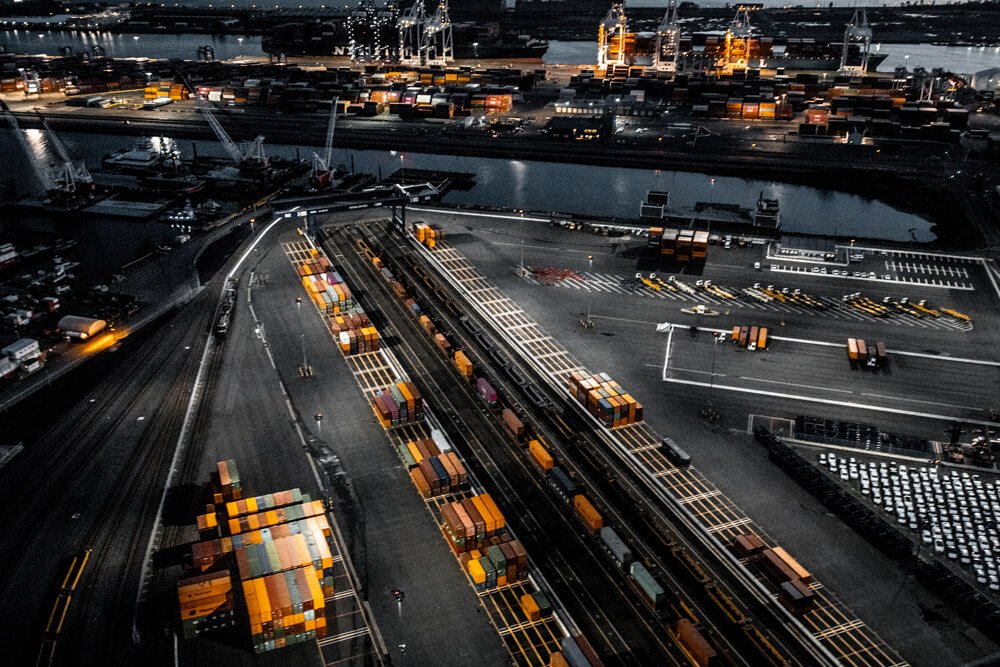Breaking Boundaries: How Ocean Freight Is Redefining Logistics in the Digital Age
Ocean freight has long been a critical component of global trade, enabling the movement of goods across vast distances. In the digital age, however, it is experiencing a significant transformation that is redefining the logistics industry. Advancements in technology, coupled with changing consumer demands, have pushed ocean freight to break traditional boundaries and embrace new possibilities. This article explores how ocean freight is revolutionizing logistics, leveraging innovative solutions, and overcoming challenges in the digital era.
Introduction
In today’s interconnected world, businesses rely on efficient supply chain management to meet customer expectations and remain competitive. Ocean freight plays a vital role in this ecosystem, serving as a cost-effective and reliable mode of transportation for goods on a global scale. With the emergence of digital technologies, ocean freight has seized the opportunity to redefine logistics and optimize its operations.
The Role of Ocean Freight in Global Trade
Ocean freight accounts for the majority of international trade, enabling the transportation of large volumes of goods across continents. It provides a crucial link between manufacturers, suppliers, and consumers, facilitating the movement of raw materials, components, and finished products. By leveraging economies of scale, ocean freight offers cost advantages compared to other transportation modes like air or road.
Digital Disruption: Transforming Logistics
The digital age has brought about disruptive changes across various industries, and logistics is no exception. Ocean freight is undergoing a transformation as it embraces digital technologies to streamline processes, enhance visibility, and improve efficiency. From booking shipments online to tracking containers in real-time, digitalization is enabling seamless communication and collaboration throughout the supply chain.
Embracing Automation and IoT
Automation and the Internet of Things (IoT) are revolutionizing the way ocean freight operates. Smart containers equipped with sensors provide real-time data on temperature, humidity, and location, ensuring the integrity and safety of cargo. Automated port terminals, equipped with robotic cranes and guided vehicles, optimize loading and unloading processes, reducing turnaround times and increasing productivity.
Enhancing Efficiency with Predictive Analytics
Predictive analytics leverages historical and real-time data to forecast demand, optimize routing, and anticipate disruptions. Ocean freight companies are utilizing advanced analytics tools to gain valuable insights into market trends, optimize vessel utilization, and improve operational efficiency. By accurately predicting demand and optimizing resources, they can minimize costs and provide better services to customers.
Streamlining Operations with Blockchain
Blockchain technology holds immense potential in revolutionizing the transparency and security of ocean freight operations. By creating a decentralized and immutable ledger, blockchain enables secure and transparent transactions, reducing the risk of fraud and increasing trust among stakeholders. Smart contracts based on blockchain automate and streamline contractual processes, eliminating paperwork and reducing administrative costs.

Sustainable Shipping: Environmental Considerations
As the world becomes more environmentally conscious, sustainability has become a key concern for the logistics industry. Ocean freight is actively exploring ways to reduce its carbon footprint, such as adopting cleaner fuels, optimizing vessel designs for fuel efficiency, and implementing emission reduction initiatives. The industry’s commitment to sustainability aligns with global efforts to combat climate change and preserve the planet for future generations.
Overcoming Challenges in Ocean Freight
While ocean freight offers numerous benefits, it also faces challenges that require innovative solutions. Factors like weather disruptions, port congestion, and geopolitical issues can impact shipping schedules and increase costs. However, by leveraging digital technologies, predictive analytics, and effective risk management strategies, these challenges can be mitigated, ensuring smoother operations and minimizing disruptions.
The Future of Ocean Freight: Trends and Opportunities
The future of ocean freight is filled with exciting possibilities. Emerging technologies like artificial intelligence, autonomous vessels, and robotics are poised to further revolutionize the industry. The integration of data analytics and machine learning will enable more accurate demand forecasting, optimized routing, and improved customer experiences. Additionally, the growing trend of e-commerce and cross-border trade presents significant opportunities for ocean freight providers to expand their services and reach new markets.
Conclusion
Ocean freight is at the forefront of redefining logistics in the digital age. By embracing digital technologies, automation, and data-driven decision-making, the industry is overcoming traditional boundaries and revolutionizing global trade. From enhancing efficiency and visibility to addressing sustainability concerns, ocean freight is evolving to meet the evolving needs of businesses and consumers worldwide.
FAQ
1. How long does ocean freight usually take? Ocean freight transit times vary depending on the distance, route, and weather conditions. On average, it can take between two to six weeks for goods to reach their destination.
2. Is ocean freight cost-effective compared to other transportation modes? Yes, ocean freight is generally more cost-effective for long-distance transportation compared to air or road freight. It offers economies of scale, allowing for the shipment of large volumes of goods at lower costs.
3. How is technology transforming ocean freight operations? Technology is revolutionizing ocean freight operations by enabling digitalization, automation, predictive analytics, and blockchain implementation. These advancements improve efficiency, visibility, and sustainability in the logistics process.
4. What are the environmental considerations in ocean freight? Ocean freight companies are actively adopting sustainable practices, including using cleaner fuels, optimizing vessel designs for fuel efficiency, and implementing emission reduction initiatives to minimize the industry’s environmental impact.

5. What are the future trends in ocean freight? The future of ocean freight holds exciting opportunities with the integration of artificial intelligence, autonomous vessels, and robotics. Data analytics, machine learning, and the growth of e-commerce will further optimize operations and expand the industry’s reach.
